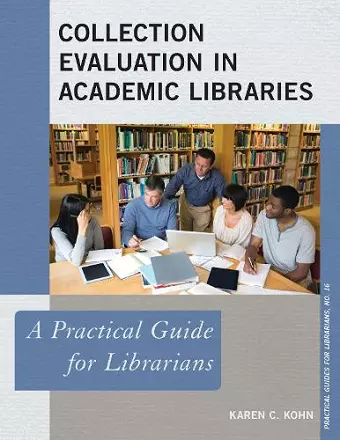Collection Evaluation in Academic Libraries
A Practical Guide for Librarians
Format:Paperback
Publisher:Rowman & Littlefield
Published:24th Jun '15
Currently unavailable, and unfortunately no date known when it will be back

Librarians have long used data to describe their collections. Traditional measures have simply been inputs and outputs: volumes acquired, processed, owned, or circulated. With the growth since the 1990s of cultures of assessment, librarians have sought statistics that are evaluative rather than simply descriptive. More recently, exponentially increasing journal prices and an economic recession have intensified the need to make careful purchasing decisions and to justify these to administrators. A methodical evaluation of a library collection can help librarians understand and meet user needs and can help communicate to administrators that the library is a good use of the institution’s money. Collection Evaluation in Academic Libraries: A Practical Guide for Librarians equips collections managers to select and implement a method or several methods of evaluating their library collections. It includes sections on four tools for evaluation: • Comparison to peer institutions • Core lists • Usage statistics from circulation and ILL • Citation analysis Chapters on each of these approaches present the advantages and disadvantages of each method, instructions on data collection and analysis—with screenshots—and suggested action steps after completing the analysis. With a unique combination of step-by-step instructions and discussions of the purpose and role of data, this book provides an unusually thorough guide to collection evaluation. It will be indispensable for collection development librarians and anyone looking to strengthen the culture of assessment within the library.
Step-by-step instructions for information gathering and analysis and generally using Excel files are the basis of this guide, though reference is also made to the two major collection evaluation software tools: OCLC’s (Online Computer Library Center) WorldShare Collection Evaluation and ProQuest’s Intota Assessment. Both tools automate the process of data compilation and peer comparison to some extent but are not necessary to accomplish the twin goals of collection evaluation and improved collection development. As Kohn (collection development manager, Arcadia Univ.) points out, the analysis of appropriate data is also useful in weeding decisions and to reinforce increased budget requests. With lengthy overviews of the traditional methods of library collection analysis: list checking, holdings counts, circulation counts, and citation analysis, this manual also includes some guidance on the use of COUNTER reports for electronic holdings. Where this guide shines is in its final chapter on how to present the results to specific audiences. Verdict: New librarians will find this guide invaluable for creating a collection evaluation plan for their libraries and even experienced librarians will likely unearth something new, even though most of this ground is well-trodden. * Library Journal *
In this guide to an important and always-evolving area of academic librarianship, Kohn, a collection-development manager at Arcadia University, explores how academic libraries can implement the most current and effective methods for assessing their collections. Due to shrinking budgets, rising prices, and the increasing need to justify collection-development policies to the administration, it is critical that librarians make informed decisions when it comes to their collections. This book is well organized and comprehensive, with illustrations, charts, and extensive references. Each chapter is devoted to different collection-development strategies, which include collecting, analyzing, interpreting, using, and communicating the data. This latest edition to the Practical Guides for Librarians series is a must for collection-development librarians and for academic librarians who need to learn more about this essential area of librarianship. * Booklist *
Kohn’s book, then, fills an important gap in the literature and provides a vital service by gathering in one place discussion of several of the most important techniques and tools used for collection assessment…. Kohn has produced an attractively laid-out book that summarizes the elements of collection evaluation in an accessible, detailed manner. A librarian starting from scratch with collection assessment should begin with this book. It provides all the conceptual groundwork and step by- step instructions to carry out this essential work. All librarians with roles in collection management are advised to consult Collection Evaluation in Academic Libraries. * Technicalities *
ISBN: 9781442238602
Dimensions: 280mm x 217mm x 12mm
Weight: 581g
204 pages